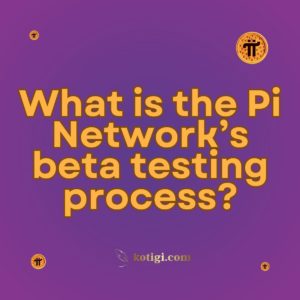
How can Pi be mined on mobile phones without energy consumption typically known in “crypto mining”?
Pi’s consensus algorithm is adapted from the Stellar Consensus Protocol (SCP) and an algorithm called Federated Byzantine Agreement (FBA), which do not require energy consumption to reach consensus in order to secure a ledger. This type of consensus algorithm requires the nodes to form quorums and exchange messages with each other based on a trust graph composed of individual quorum slices to come to a “consensus” on what the next block should be.
Introduction
Cryptocurrency mining is usually associated with high electricity costs, specialized hardware, and significant environmental impact. Bitcoin mining, for example, uses a vast amount of computational power, requiring energy-hungry machines to solve complex puzzles and validate transactions. However, Pi Network has introduced a groundbreaking approach that allows users to mine cryptocurrency on mobile phones with negligible energy consumption. But how does Pi achieve this, and why does it differ so drastically from traditional mining methods? In this article, we will explore the mechanics behind Pi Network’s mobile mining and how it avoids the typical energy consumption found in conventional crypto mining.
Understanding Traditional Crypto Mining
To understand how Pi differs from traditional mining, it’s important to first grasp how conventional mining works, particularly in well-known cryptocurrencies like Bitcoin and Ethereum.
The Energy-Intensive Proof-of-Work Model
The primary method used by most early cryptocurrencies for mining is called Proof-of-Work (PoW). In a PoW system, miners compete to solve complex mathematical puzzles. The first one to solve the puzzle validates the block of transactions and is rewarded with newly minted cryptocurrency, such as Bitcoin.
Why Proof-of-Work Consumes So Much Energy?
In the PoW system, solving these puzzles requires powerful computing hardware. This is because the puzzles are designed to be computationally difficult, requiring miners to run high-powered processors continuously. The more powerful the hardware, the better the miner’s chances of solving the puzzle first. However, this also means that massive amounts of energy are consumed during the mining process.
For example, Bitcoin mining alone consumes more energy annually than entire countries like Argentina or Sweden. This energy consumption has raised environmental concerns, as most of the energy used comes from non-renewable sources.
Why Mobile Mining Was Considered Impossible?
Given the heavy computational demands of PoW, mobile phones were never considered viable for mining traditional cryptocurrencies. Mobile devices lack the processing power and battery capacity to compete with dedicated mining rigs, and attempting to mine Bitcoin on a phone would not only be inefficient but would also quickly drain the device’s battery and degrade its hardware.
How Pi Network’s Mining Model Is Different?
Pi Network has completely reimagined the concept of cryptocurrency mining, making it accessible for anyone with a smartphone. By utilizing an energy-efficient consensus algorithm, Pi allows users to mine Pi coins without draining their device’s resources.
The Stellar Consensus Protocol (SCP)
The core technology behind Pi’s low-energy mining is the Stellar Consensus Protocol (SCP). Unlike PoW, which relies on computational work to validate transactions, SCP relies on a system of trusted nodes and security circles to secure the network and validate transactions.
What Is Stellar Consensus Protocol?
SCP is a decentralized consensus algorithm that enables nodes to reach agreement (consensus) on the state of the network without the need for energy-intensive mining. Instead of solving complex puzzles, SCP uses a system of trust where nodes in the network vote on which transactions should be included in the blockchain.
Each node in the SCP network maintains a list of other trusted nodes (known as a quorum slice). When a transaction is proposed, nodes will only approve it if it has been validated by a sufficient number of trusted nodes within their slice. This creates a decentralized, trust-based system for securing the network, which is far more energy-efficient than PoW.
Pi’s Trust-Based System
Pi Network’s version of SCP builds on this model with the introduction of Security Circles. Every Pi user forms a security circle by inviting people they trust into their circle. This network of trust ensures that transactions are validated by real individuals, rather than requiring computational power to solve puzzles.
Security Circles and Consensus
Each Security Circle consists of 3 to 5 people who vouch for each other’s authenticity and contribute to the network’s security. These trusted relationships are the basis of Pi’s decentralized ledger. When a transaction occurs, it is validated by these trusted circles, ensuring that only legitimate users are involved in the network.
By leveraging human trust rather than computational power, Pi can achieve the same level of security and decentralization as traditional cryptocurrencies—without the energy drain.
How Pi Network Avoids Draining Your Phone’s Resources?
Another key feature of Pi Network’s mobile mining model is its ability to operate in the background without consuming a significant amount of energy or processing power.
Minimal Resource Usage
Unlike PoW-based cryptocurrencies, Pi mining does not require your phone to constantly run complex calculations. Instead, Pi Network’s mining process is as simple as tapping a button once every 24 hours to validate your participation. After tapping the button, the mining process occurs on the network, not on your phone. This means:
- No battery drain: Mining Pi does not drain your phone’s battery because the heavy lifting is done by the network’s nodes.
- No overuse of data or CPU: Pi mining uses minimal data and processing power, allowing you to continue using your phone for other tasks without any noticeable impact on performance.
- No overheating: Since your phone is not performing any intensive computations, it will not overheat or wear down due to mining activities.
Passive Mining
Pi Network’s mining process is designed to be passive. Once you’ve tapped the button, you are effectively “participating” in the mining process for the next 24 hours. This allows you to earn Pi coins while going about your daily activities. The mining continues even if your phone is locked or the app is closed, as long as you check in once a day to confirm your participation.
This approach makes Pi Network mining truly accessible for everyone, without the need for expensive hardware or constant phone usage.
Why Pi Network’s Energy Efficiency Matters?
Pi Network’s energy-efficient model is not only beneficial for individual users, but it also has broader implications for the cryptocurrency industry and the environment.
A Greener Alternative to Traditional Mining
By eliminating the need for energy-intensive mining, Pi Network offers a greener alternative to traditional cryptocurrencies. In an era where environmental concerns are increasingly important, Pi’s low-energy model stands out as a sustainable approach to digital currency.
As the world looks for ways to reduce carbon footprints, Pi Network’s ability to scale without increasing energy consumption could make it an attractive option for environmentally conscious users.
Accessibility for All
Pi Network’s mobile-first, energy-efficient model also makes cryptocurrency more accessible to a broader audience. In many developing countries, where access to high-end computing equipment is limited, Pi Network offers a way for users to participate in the cryptocurrency economy without needing expensive hardware or high electricity costs.
By democratizing access to mining, Pi Network is helping to level the playing field in the world of digital currencies, making it possible for anyone with a smartphone to mine and own Pi.
The Future of Mobile Mining and Pi Network
As Pi Network continues to grow and evolve, its innovative approach to mobile mining could set a new standard for future cryptocurrencies. Pi’s use of SCP, trust-based security circles, and minimal resource usage positions it as a leader in the next generation of energy-efficient, decentralized cryptocurrencies.
Pi’s Mainnet Launch
Pi is still in its testnet phase, meaning that while users are mining Pi and building up their wallets, Pi has not yet been listed on public exchanges. Once Pi transitions to its mainnet, the Pi Wallet will become fully functional, allowing users to trade, send, and receive Pi in real-world transactions.
Conclusion
Pi Network has fundamentally changed the way we think about cryptocurrency mining by making it accessible and energy-efficient. Through its use of the Stellar Consensus Protocol and trust-based Security Circles, Pi can be mined on mobile phones without the high energy consumption typically associated with crypto mining. This innovation not only makes Pi Network more sustainable, but it also opens the door for millions of users around the world to participate in the cryptocurrency economy.
As Pi moves closer to its mainnet launch, the ability to mine Pi on mobile devices with virtually no energy consumption could have far-reaching implications for the future of decentralized finance and digital currencies.
Key Takeaways:
- Pi Network uses the Stellar Consensus Protocol (SCP) to allow mining without energy-intensive computations.
- Mining Pi is as simple as tapping a button once every 24 hours, with no significant impact on battery life or phone performance.
- Pi’s trust-based Security Circles replace traditional mining rigs, enabling decentralized security without resource consumption.
- Pi Network offers a sustainable and accessible alternative to traditional cryptocurrency mining, paving the way for eco-friendly digital currency.





